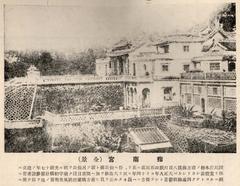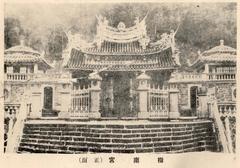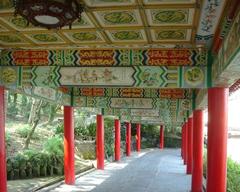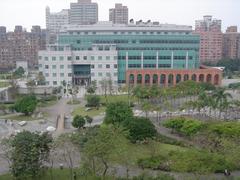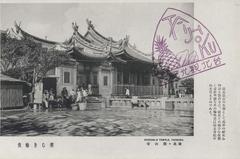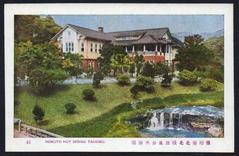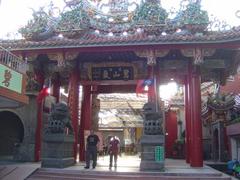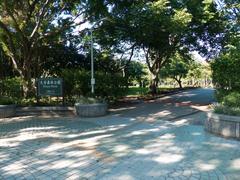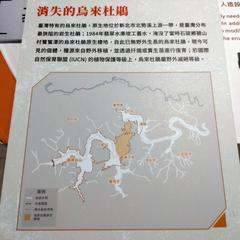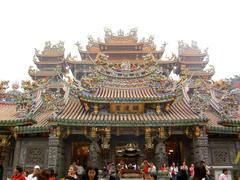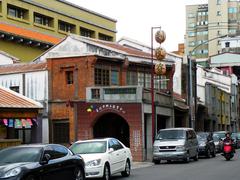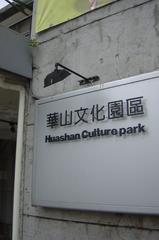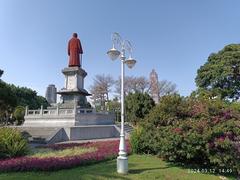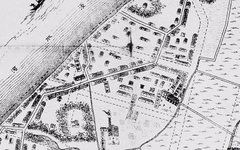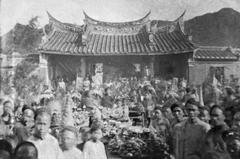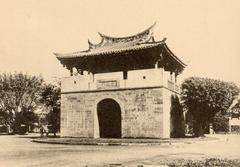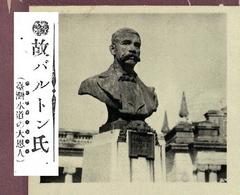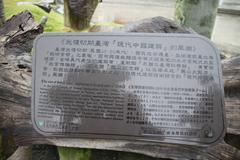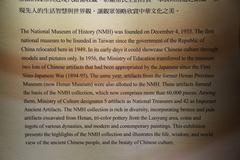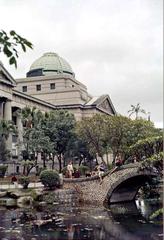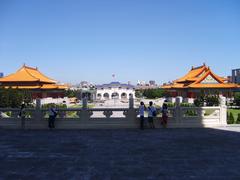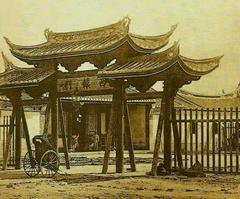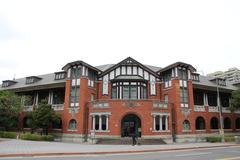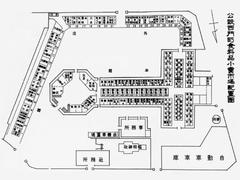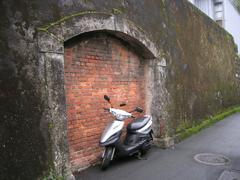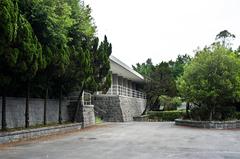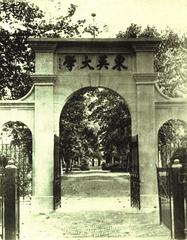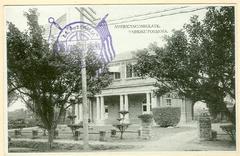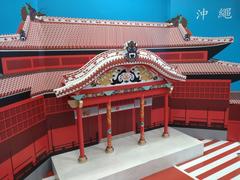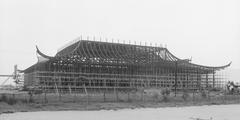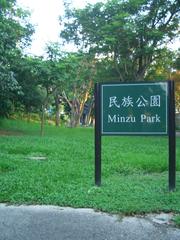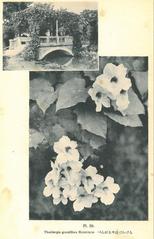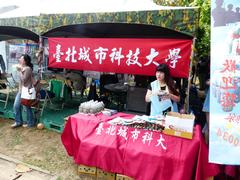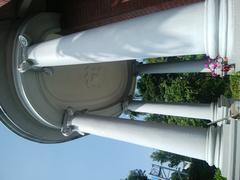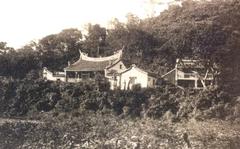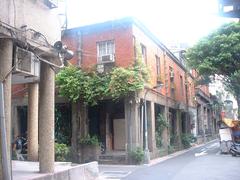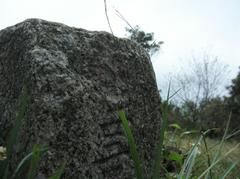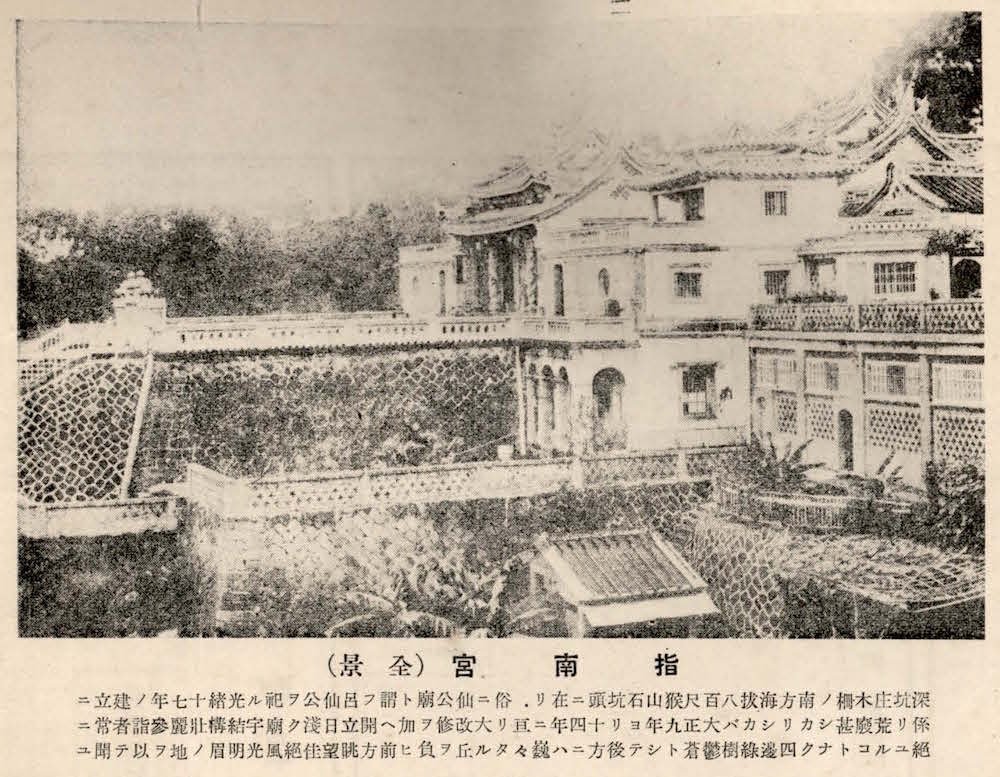
Chi Nan Temple Visiting Hours, Tickets, and Comprehensive Guide to Taipei’s Historic Gem
Date: 15/06/2025
Introduction
Chi Nan Temple (指南宮, also known as Zhinan Temple) is a striking symbol of Taiwan’s religious syncretism, rich heritage, and breathtaking natural beauty. Situated on the lush slopes of Zhishan (Zhinan) Mountain in Taipei’s Wenshan District, this iconic Taoist sanctuary, established in 1890, honors Lü Dongbin—leader of the Eight Immortals—and unites Taoist, Buddhist, Confucian, and local folk traditions. Over more than a century, the temple has grown from a humble shrine into an expansive 80-hectare complex, seamlessly woven into Taipei’s mountainous landscape. Visitors are captivated by panoramic city views, vibrant festivals, and the temple’s remarkable architectural artistry.
Chi Nan Temple is accessible via the scenic Maokong Gondola, hiking trails, public transit, and taxi, and admission is free—making it an open and welcoming site for all. This guide provides essential visiting information, historical insights, accessibility details, etiquette guidelines, and highlights of nearby attractions to ensure a rewarding and respectful experience at one of Taipei’s most treasured historical sites (Visions of Travel, Taiwan Obsessed, Taipei Tourism Board).
Table of Contents
- Historical Origins and Development
- Religious and Cultural Significance
- Visiting Information: Hours, Tickets, Accessibility
- Getting to Chi Nan Temple
- Architectural Features and Layout
- Rituals, Offerings, and Spiritual Practices
- Festivals and Major Celebrations
- Nearby Attractions & Suggested Itineraries
- Inclusivity, Etiquette, and Travel Tips
- Visitor Experience and Amenities
- Safety, Language, and Communication
- Frequently Asked Questions (FAQs)
- Visual Resources and Contact Information
- Conclusion and Summary
- Sources
Historical Origins and Development
Chi Nan Temple traces its roots to the late Qing Dynasty. The veneration of Lü Dongbin began in Taipei’s Wanhua District, with the earliest documented worship dating to 1882. A deadly epidemic on Jingmei Street prompted local leaders to move Lü Dongbin’s statue to the area, resulting in the cessation of the outbreak—a miracle attributed to the deity, prompting the construction of the original thatched temple in 1890. Through generous donations and community support, the temple expanded, developing into a sprawling sanctuary that now features four principal halls, five secondary halls, ornate pavilions, and panoramic terraces (Visions of Travel).
Religious and Cultural Significance
The temple’s main deity, Lü Dongbin, is celebrated for wisdom, healing, and colorful legends. Chi Nan Temple exemplifies religious syncretism, honoring Taoist, Buddhist, Confucian, and folk beliefs, with altars dedicated to figures such as the Yellow Emperor, Confucius, Buddha, and Laozi. This spiritual inclusivity attracts a diverse range of worshippers and visitors, making the temple a core site for thanksgiving, healing, and community festivals.
Visiting Information: Hours, Tickets, Accessibility
- Opening Hours: Daily from 6:00 AM to 9:00 PM (some sources note earlier closing times; check official updates before visiting).
- Admission: Free for all visitors. Donations are welcome to support temple upkeep.
- Accessibility: While the Maokong Gondola brings visitors close to the upper levels, many areas involve staircases and uneven terrain. Wheelchair access is limited; assistance may be available on request. Plan accordingly for visitors with mobility challenges.
Getting to Chi Nan Temple
- Maokong Gondola: The most scenic and convenient option. Board at Taipei Zoo Station (Brown Line MRT) and alight at Zhinan Temple Station for direct access. Note that the gondola may close during adverse weather or for maintenance (Trip.com).
- By Bus: Bus 530 from Taipower Building MRT Station serves the temple area.
- By Taxi or Car: Taxis are readily available throughout Taipei. Limited parking is available near the temple.
- On Foot: Adventurous visitors can hike over 1,000 stone steps up the mountain, with rest areas and vendors along the way.
Architectural Features and Layout
Chi Nan Temple’s design harmoniously integrates with its mountain setting, following feng shui principles. Its architecture combines Taoist, Buddhist, and Confucian elements, yielding a visually and spiritually rich environment. Notable structures include:
- Chunyang (Principle) Hall: The original and most significant hall, featuring marble cladding and intricate dragon columns (taiwangods.moi.gov.tw).
- Lingxiao Hall: The highest structure, blending Minnan and northern Chinese styles, distinguished by Guanyin Stone dragon columns.
- Daxiong (Dacheng) Hall: A Buddhist chapel with a unique black Sakyamuni Buddha statue.
- Confucian Dacheng Chapel: Simple and austere, dedicated to Confucius.
- Nantianmen (Southern Sky Gate): The main entrance, leading to Tongtian Avenue, a tree-lined path especially scenic in spring and autumn (firsttimetravels.com).
- Stairways and Terraces: The grand stairway offers a spiritual ascent with changing vistas.
- Yingxian Pavilion & Free Tea Pavilion: Spaces for rest, contemplation, and community interaction.
The temple’s decorative motifs—dragons, phoenixes, and auspicious symbols—embody protection and prosperity. Gardens, stone bridges, and creeks further enhance the tranquil atmosphere (Lonely Planet, myguidetaipei.com).
Rituals, Offerings, and Spiritual Practices
Visitors can partake in time-honored rituals such as lighting incense, bowing, and offering fruit, flowers, or paper money. Divination using jiaobei (moon blocks) or fortune sticks (kau cim) is a popular way to seek guidance from the gods. The temple’s layout reflects spiritual hierarchy, with the central hall reserved for Lü Dongbin and side halls for other deities.
Festivals and Major Celebrations
Chi Nan Temple comes alive during major religious festivals, notably Lü Dongbin’s birthday (14th day, fourth lunar month) and the Ghost Festival (seventh lunar month). These celebrations feature elaborate ceremonies, dragon and lion dances, music, and communal feasts, highlighting the temple’s cultural and social importance (Taiwan Obsessed).
Nearby Attractions & Suggested Itineraries
- Maokong Tea Plantations: Experience Taiwan’s tea culture in scenic mountain teahouses.
- Taipei Zoo: A top family destination at the base of the Maokong Gondola.
- Singhua Garden: Tranquil park with seasonal flower displays.
- Nature Trails: Numerous hiking paths connect the temple to Maokong and the surrounding mountains, perfect for nature enthusiasts.
Suggested Itinerary: Start at Taipei Zoo, ride the Maokong Gondola to Chi Nan Temple, and finish with tea and sunset views in Maokong.
Inclusivity, Etiquette, and Travel Tips
Chi Nan Temple welcomes visitors of all backgrounds. To ensure a respectful experience:
- Dress Modestly: Cover shoulders and knees; remove hats in main halls.
- Quiet Conduct: Maintain a respectful silence, especially during ceremonies.
- Proper Entry: Enter through the right-hand door, exit through the left; avoid using the central door, which is reserved for deities.
- Photography: Permitted outdoors; check for restrictions in prayer halls.
- Participation: Visitors may observe or respectfully join rituals under guidance.
Travel Tips:
- Visit on weekday mornings for fewer crowds.
- Wear comfortable shoes for steps and uneven terrain.
- Bring rain protection during the wet season (May–September).
- Couples may wish to heed the local superstition: climbing the stairs together is considered unlucky for relationships.
Visitor Experience and Amenities
- Restrooms: Available and well-maintained.
- Rest Areas: Benches and shaded pavilions throughout the grounds.
- Drinking Water: Free stations provided; bring a reusable bottle.
- Souvenir Shops: Sell incense, religious items, and local souvenirs.
- Food: Snack stalls and teahouses nearby, especially in Maokong.
Safety, Language, and Communication
- Safety: The temple is very safe, with security personnel present. Stay aware of personal belongings during festivals.
- Language: Signage is in Mandarin and English; staff offer basic English assistance.
Frequently Asked Questions (FAQs)
Q: What are Chi Nan Temple’s opening hours?
A: 6:00 AM to 9:00 PM daily (verify before visiting; hours may vary during festivals).
Q: Is admission free?
A: Yes; donations are welcome.
Q: How do I get there?
A: Maokong Gondola (Zhinan Temple Station), bus 530, taxi, or hiking.
Q: Is it accessible for those with mobility challenges?
A: Some areas are accessible via gondola, but many involve stairs. Assistance may be available; check ahead.
Q: Are guided tours available?
A: Yes, through local operators or by inquiry at the visitor center.
Q: Can I take photos?
A: Outdoors, yes; check for restrictions inside prayer halls.
Visual Resources and Contact Information
- Official photos, maps, and virtual tours: Available on the Taipei Tourism Board website and Trip.com.
- Address: No. 115 Wanshu Road, Wenshan District, Taipei, Taiwan
- Phone: See Trip.com listing
- Official Website: Taipei City Government Tourism
Conclusion and Summary
Chi Nan Temple is a vibrant testament to Taipei’s spiritual and cultural landscape—a unique blend of history, sacred tradition, and natural splendor. With free admission and convenient access via the Maokong Gondola, it is an essential stop for both spiritual seekers and cultural explorers. Plan your visit for a weekday morning, observe local etiquette, and immerse yourself in the temple’s rituals, festivals, and stunning architecture.
For the latest updates, explore virtual tours, and access travel tips, consult the official tourism sites and consider downloading the Audiala app. Make the most of your Taipei adventure by visiting Chi Nan Temple and discovering the heart of Taiwan’s heritage.
Sources
- Visions of Travel
- Taiwan Obsessed
- Taipei Tourism Board
- Lonely Planet
- firsttimetravels.com
- taiwangods.moi.gov.tw
- Wikipedia
- Trip.com
- myguidetaipei.com
